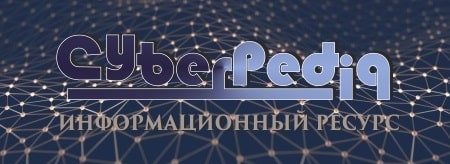План семинара: 1. Устный опрос (здесь и далее — вопросы для устного опроса см. выше).
2. Разбор следующих вопросов на основе самостоятельно изученной студентами литературы (устно):
1. History of groups of interest, lobby and the third sector.
2. Contemporary concepts of civil society.
3. The third sector: methodology and main approaches.
4. Analysis of key EU and UN documents on NGOs
Литература:
1. Etzioni A. (1973) The Third Sector and Domestic Missions. Public Administration Review, Vol. 33 (4) - pp. 314-323
2. Yanacopulos H. (2015) International NGO Engagement, Advocacy, Activism: The Faces and Spaces of Change. London: Palgrave Macmillan.
3. Lall R. (2017) Beyond Institutional Design: Explaining the Performance of International Organizations. International Organization, Vol. 71 (2) – pp. 245-280.
Занятие 2. The independence of the NGOs
План семинара: 1. Устный опрос.
2. Разбор следующих вопросов на основе самостоятельно изученной студентами литературы:
· The welfare state and the limits of the NGOs
· Project management as a tool for perfection
· Major fundraising campaigns of the world.
Литература:
1. Esping-Andersen G. (1999) Social Foundations of Postindustrial Economies. Oxford: Oxford University press.
2. Seu I., Orgad S. (Eds.) (2017) Caring in crisis? Humanitarianism, the public and NGOs. London: Palgrave Macmillan
Занятие 3. The role of NGOs in social policy agenda
План семинара: 1. Устный опрос.
2. Разбор следующих вопросов на основе самостоятельно изученной студентами литературы:
1. Media reflections on the role of NGOs in the migration crisis turbulence
2. Causes of NGO effectiveness in solving of social injustice.
3. European NGOs caring for the developing countries: colonial aftertaste or an urge to make the world a better place for everyone
Литература:
1. Ronalds P. (2010) The change imperative: creating the next generation NGO. Sterling: Kumarian Press
2. Murdie A., Hicks A. (2013) Can International Nongovernmental Organizations Boost Government Services? The Case of Health. International Organization. Vol. 76 (3) - pp. 541-573.
Занятие 4. NGOs and the Use of Violence
План семинара: SWOT-анализ международной гуманитарной деятельности НПО и НКО (на любом примере) и выбор маркетинговой стратегии в РФ
Методические рекомендации:
SWOT analysis is a technique used to identify strengths, weaknesses, opportunities, and threats related to business or project.
Strengths and weakness are frequently internally-related, while opportunities and threats commonly focus on the external environment. The name is an acronym for the four parameters the technique examines:
· Strengths: characteristics of the business or project that give it an advantage over others.
· Weaknesses: characteristics of the business that place the business or project at a disadvantage relative to others.
· Opportunities: elements in the environment that the business or project could exploit to its advantage.
· Threats: elements in the environment that could cause trouble for the business or project.
Students are asked to measure the following categories of the chosen NGO cases using the SWOT technique to evaluate internal and external features of an international stakeholder.
Занятие 5. Different Types of Structures Among NGOs
План семинара: 1. Устный опрос.
2. Разбор следующих вопросов на основе самостоятельно изученной студентами литературы:
· History of international nongovernmental organizations in the field of sports
· Connecting between politics and activities in the areas of religion and sport
· Accountability and reporting systems
· World’s largest endowments
Литература:
1. Тарасенко А.В. (2015) Некоммерческий сектор в странах Европейского Союза и России в контексте трансформации государства благосостояния. СПб.: НОРМА.
Collison H., Darnell S., Giulianotti R. (Eds.)(2018) Routledge Handbook of Sport for Development and Peace. London: Routledge.
Занятие 6. Philanthropy: from private giving to global foundations
План семинара: 1. Устный опрос.
Круглый стол в формате разбора кейсов: крупнейшие частные благотворители. Вклад в культуру и искусство
Литература:
1. Ronalds P. (2010) The change imperative: creating the next generation NGO. Sterling: Kumarian Press.








